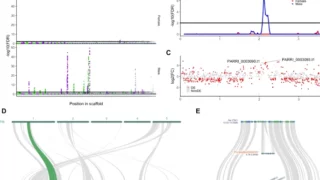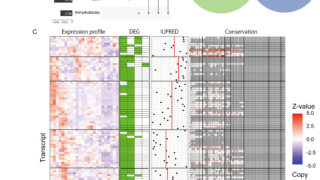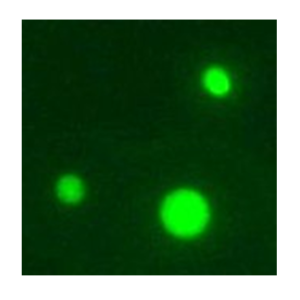Time-series transcriptomic screening of factors contributing to the cross-tolerance to UV radiation and anhydrobiosis in tardigrades

クマムシにUV照射した後の復帰過程と乾眠とに共通する遺伝子をスクリーニングした結果、緩歩動物門に広く保存され、ヒト培養細胞の酸化ストレス耐性を向上させる新規のMn依存ペルオキダーゼを同定しました。
Abstract:
Background
Tardigrades are microscopic animals that are capable of tolerating extreme environments by entering a desiccated state of suspended animation known as anhydrobiosis. While antioxidative stress proteins, antiapoptotic pathways and tardigrade-specific intrinsically disordered proteins have been implicated in the anhydrobiotic machinery, conservation of these mechanisms is not universal within the phylum Tardigrada, suggesting the existence of overlooked components.
Results
Here, we show that a novel Mn-dependent peroxidase is an important factor in tardigrade anhydrobiosis. Through time-series transcriptome analysis of Ramazzottius varieornatus specimens exposed to ultraviolet light and comparison with anhydrobiosis entry, we first identified several novel gene families without similarity to existing sequences that are induced rapidly after stress exposure. Among these, a single gene family with multiple orthologs that is highly conserved within the phylum Tardigrada and enhances oxidative stress tolerance when expressed in human cells was identified. Crystallographic study of this protein suggested Zn or Mn binding at the active site, and we further confirmed that this protein has Mn-dependent peroxidase activity in vitro.
Conclusions
Our results demonstrated novel mechanisms for coping with oxidative stress that may be a fundamental mechanism of anhydrobiosis in tardigrades. Furthermore, localization of these sets of proteins mainly in the Golgi apparatus suggests an indispensable role of the Golgi stress response in desiccation tolerance.
Authors:Yuki Yoshida, Tadashi Satoh, Chise Ota, Sae Tanaka, Daiki D. Horikawa, Masaru Tomita, Koichi Kato & Kazuharu Arakawa
Journal: BMC Genomics,2022, 23:405
投稿者プロフィール







